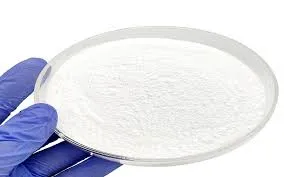Chemical Softening of Water An Overview
Water is essential for life, and its quality significantly impacts human health, agriculture, and industry. However, many regions face challenges with hard water, which contains high concentrations of dissolved minerals, primarily calcium and magnesium. Hard water can lead to scale buildup in pipes and appliances, reducing their efficiency and lifespan. To counter this issue, many households and industries employ chemical softening of water, a process that effectively reduces water hardness and improves its quality.
Understanding Water Hardness
Water hardness is classified into temporary and permanent hardness. Temporary hardness is primarily caused by the presence of calcium bicarbonate, which can be removed by boiling the water. Permanent hardness, on the other hand, results from the presence of sulfate or chloride compounds of calcium and magnesium that cannot be eliminated through simple boiling. The distinction between these types of hardness is crucial when it comes to selecting the appropriate water treatment method.
Chemical Softening Process
The chemical softening of water involves the addition of specific chemicals that react with the dissolved calcium and magnesium ions, resulting in their precipitation as insoluble compounds. Commonly used chemicals include sodium carbonate (soda ash) and sodium hydroxide (caustic soda). The basic principle of this process is to replace calcium and magnesium ions with sodium ions, which do not cause hardness.
1. Precipitation Reaction The softening process typically begins with the addition of sodium carbonate to hard water. The soluble calcium and magnesium ions react with carbonate ions to form insoluble calcium carbonate (CaCO3) and magnesium carbonate (MgCO3), which can then be removed through sedimentation or filtration.
chemical softening of water

2. Refrigeration or Sludge Formation In some settings, the precipitated solids are allowed to settle at the bottom of the tank, forming a sludge layer, while the treated water remains on top. This layer can be periodically removed, leaving soft water for use.
3. Ion Exchange Resins An alternative method of chemical softening is through ion exchange resins. In this process, resin beads exchange sodium ions for calcium and magnesium ions in the water. This method is highly effective and is widely used in residential water softeners. The ion exchange process is continuous and can be regenerated using a concentrated sodium chloride solution once the resin becomes saturated with hardness ions.
Benefits of Chemical Softening
The benefits of chemically softened water are manifold. In residential settings, it leads to reduced scale buildup in plumbing fixtures and appliances, ensuring their longevity and reliable operation. It also enhances the effectiveness of soaps and detergents, reducing the amount needed for cleaning purposes and contributing to less environmental impact.
In industrial applications, softened water is crucial for processes that require high purity and efficiency, such as in boiler feedwater, where hard minerals can cause significant damage and inefficiencies. Moreover, industries that engage in food processing or pharmaceuticals often require ultra-pure water, and chemical softening is an integral part of achieving those standards.
Conclusion
In conclusion, chemical softening of water is a vital process that addresses the issues posed by hard water. Through precipitation reactions or ion exchange methods, this treatment enhances water quality and offers considerable benefits for both households and industries. As global water quality concerns continue to rise, understanding and implementing effective water softening techniques will remain crucial for ensuring sustainable access to clean and safe water.

